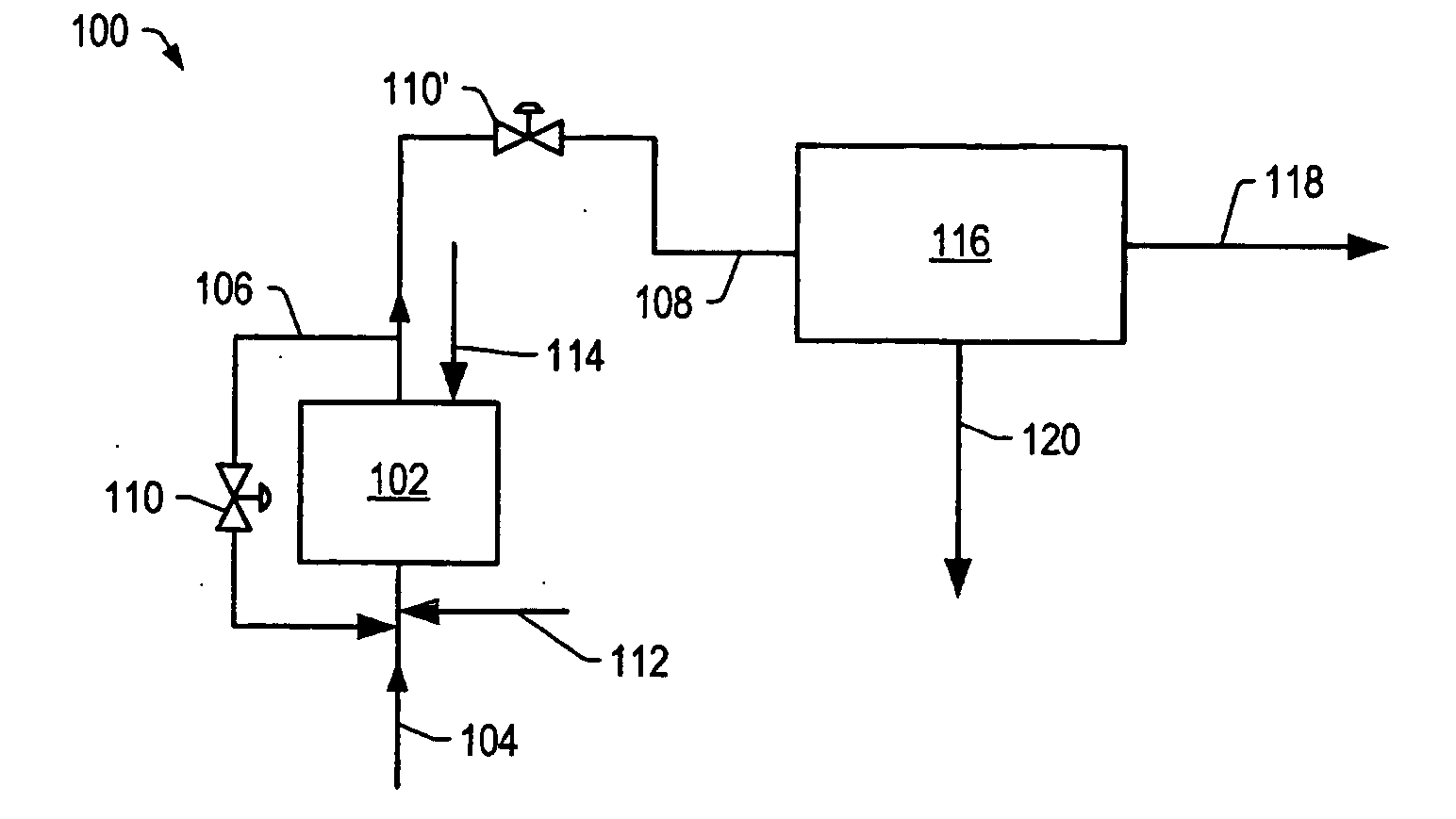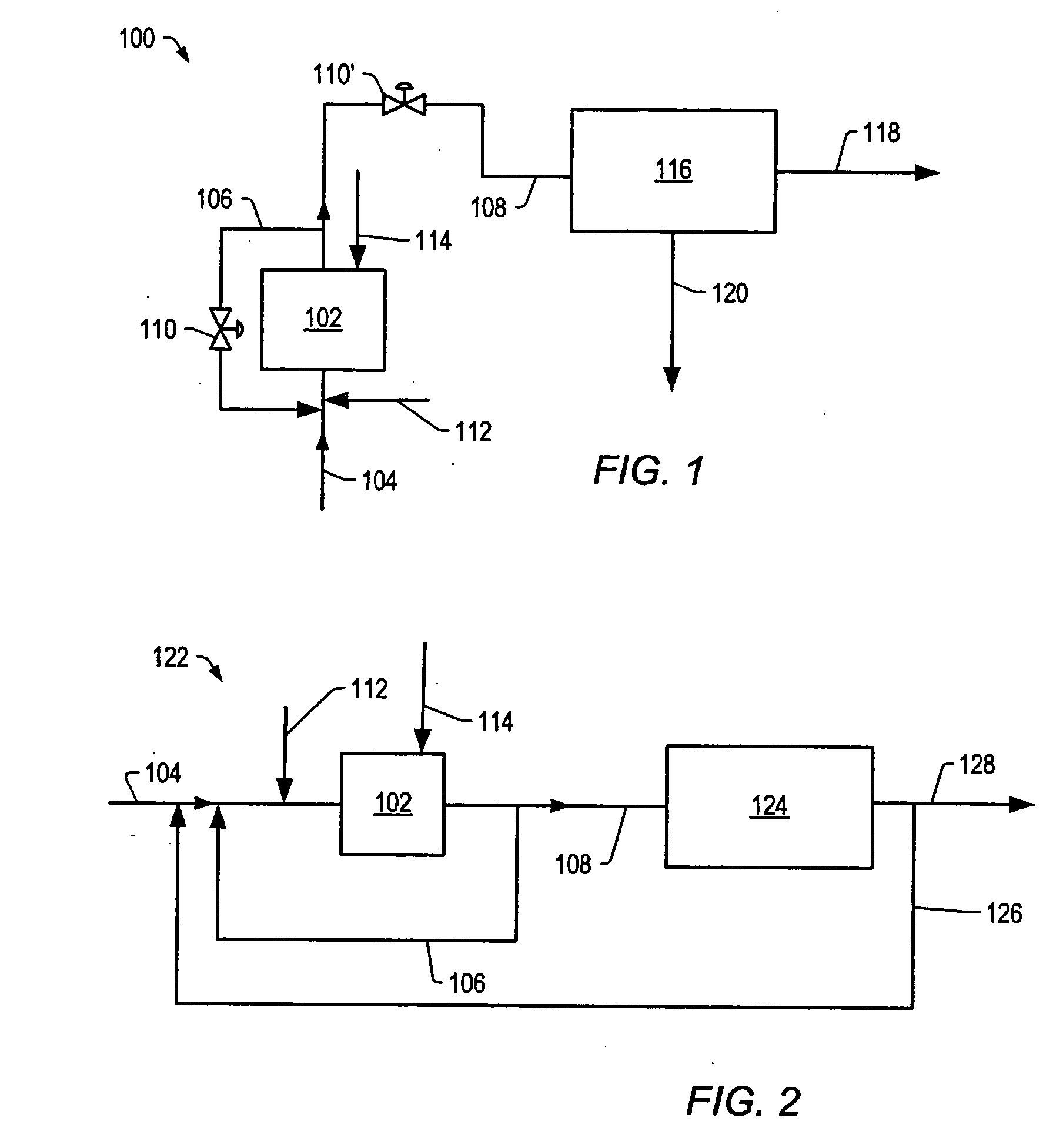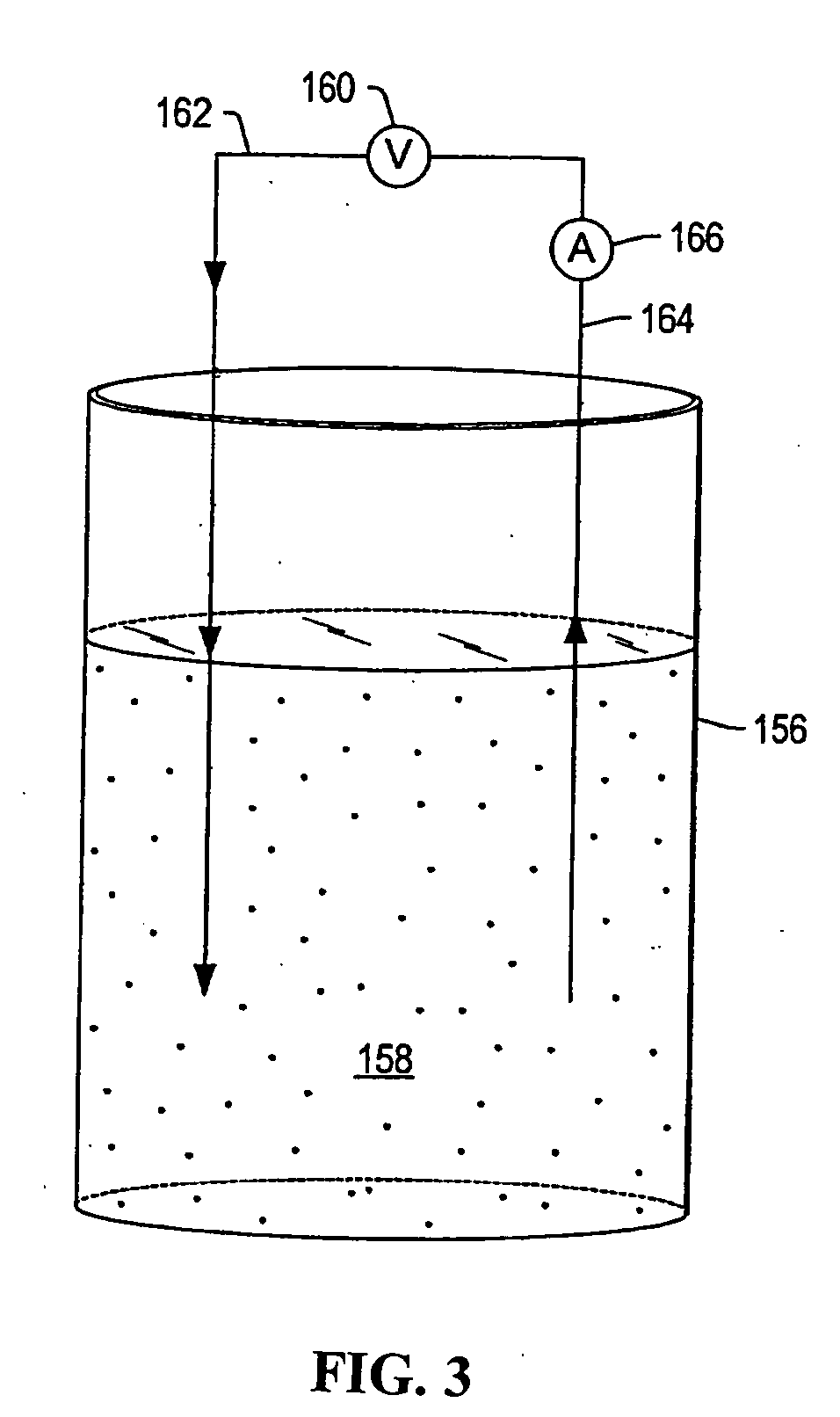Method of decomposing polymer
a polymer and composition technology, applied in detergent compositions, detergent powders/flakes/sheets, chemistry apparatus and processes, etc., can solve the problems of low grade or economic value of products, and the increasing problem of dumping such waste materials
- Summary
- Abstract
- Description
- Claims
- Application Information
AI Technical Summary
Benefits of technology
Problems solved by technology
Method used
Image
Examples
examples
[0161] Non-limiting examples of catalyst preparations, testing of catalysts, and systems with controlled contacting conditions are set forth below.
[0162] Contact of a Polymeric Feed—General Procedures. The following equipment and general procedure was used in the Examples except where variations are described.
[0163] Reactor: A 250 mL Hastelloy C Parr Autoclave (Parr Model #4576) rated at 35 MPa working pressure (5000 psi) at 500° C., was fitted with a mechanical stirrer and an 800 watt Gaumer band heater on a Eurotherm controller capable of maintaining the autoclave at ±5° C. from ambient to 625° C., a gas inlet port, a steam inlet port, one outlet port, and a thermocouple to register internal temperature. Prior to heating, the top of the autoclave was insulated with glass cloth.
[0164] Product Collection: Vapor from the reactor exited the outlet port of the reactor and was introduced into a series of cold traps of decreasing temperatures (dip tubes connected to a series of 150 mL...
examples 1-2
Contact of a Waste Tire Feed with a Hydrogen Source in the Presence of a K2CO3 / Rb2CO3 / Cs2CO3 Catalyst and Steam
[0166] The reaction equipment and general procedures in Examples 1-65 were the same as described above except where variations are described below.
[0167] In Example 1, 63.1 g of K2CO3 / Rb2CO3 / Cs2CO3 catalyst, and 105.3 g of tire pieces (1″ square pieces of non-steel belted tire manufactured by Armstrong Tire Co.) were charged into the Hastelloy C 250 ml autoclave reactor. The reactor was connected to a steam generator, a gas feed line, and a vent line. The vent line was provided with two cold traps in series (room temperature and 0° C. respectively). An additional 0° C. cold trap packed with silicon carbide for mist removal was provided in the vent line after these traps. The gas outlet of the demisting cold trap was connected to a wet test meter to monitor gas volume. Gas vented from the wet test meter was collected in gas sampling bags. After nitrogen gas purging of the ...
examples 3-4
Contact of a Waste Tire Feed with a Hydrogen Source in the Presence of a SiC control and Steam
[0170] In Experiment 3, the reaction was carried out in the same manner as during Experiment 1 except for charging of 60.6 g of silicon carbide and 109.6 g of 1″ square pieces of non-steel belted tire. A total of 51.9 L of gas was collected in the gas sampling bags. A dark brown organic liquid (60.61 g) and a cloudy yellow aqueous solution (33.84 g) were obtained from the room temperature trap. A dark brown organic liquid (3.03 g) and a yellow aqueous solution (1.39 g) were obtained from the 0° C. trap, and 1.79 g of brown organic liquid was obtained from the demisting trap. A total of 100.6 g of solids containing fibers was retrieved from the reactor as a black powder or solid. API gravity of the organic liquid layer in the room temperature trap was 19.19. Samples were analyzed by HTSD, GC / MS, elemental, 13C NMR, and 1H NMR analysis.
[0171] In Experiment 4, the reaction was carried out in...
PUM
 Login to View More
Login to View More Abstract
Description
Claims
Application Information
 Login to View More
Login to View More - R&D
- Intellectual Property
- Life Sciences
- Materials
- Tech Scout
- Unparalleled Data Quality
- Higher Quality Content
- 60% Fewer Hallucinations
Browse by: Latest US Patents, China's latest patents, Technical Efficacy Thesaurus, Application Domain, Technology Topic, Popular Technical Reports.
© 2025 PatSnap. All rights reserved.Legal|Privacy policy|Modern Slavery Act Transparency Statement|Sitemap|About US| Contact US: help@patsnap.com



